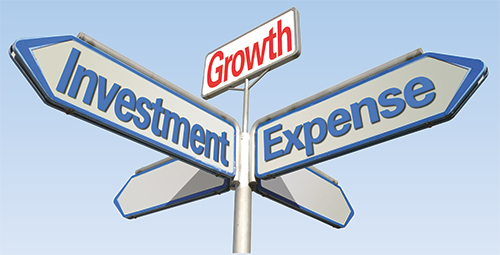Customer Value
If value is in the eye of the customer, then understanding customer needs is the only way to deliver value. Investing in the business requires that we always consider what our customers value to ensure a significant and sustained return on the investment.
Consider a client of mine who invested heavily in new waterjet-cutting technology, only to have its largest customer pull its business just six months later. The investment decision was based solely on improving the performance of its business with this customer, any value of which was not communicated or shared with the customer. By returning to the model above, we identified how the technology could be repositioned to increase value to existing and new customers, resulting in new business opportunities.
Market Need
As noted above, shops investing in technology, equipment or skills to help better manage operations today are already behind. When considering market need relative to investment, it’s imperative that metalformers paint a picture of the future—specifically, what lies on the horizon for your customers. If you supply the automotive market, for example, customer needs continue to shift to lighter materials. Investment in anything other than these areas may result in a sunken investment as the market for heavier steels declines.
I call this assessment of market needs a scan of the horizon, as it challenges us to consider what lies ahead in existing and new markets. Contrary to common thought, ensuring a robust vision of market needs requires insights from across the business.
This is not a sales exercise so much as it is a robust vision of opportunities, to clarify those opportunities and delineate advantageous areas for market growth.
Margin Potential
I find that all-too-often consideration of margin potential gets lost in a growth-investment strategy. Structurally, it is only after you have considered customer value and market need that you can be fully prepared to assess margin potential. I prefer to err on the side of caution in most instances by finalizing a margin opportunity of no greater than 75 percent of the predicted margin. By doing so, I can create a margin of error to account for unexpected costs and obstacles that most likely will impact margin expansion.
There is little doubt that the market has changed, and for now it would appear that skittish customers will continue to place greater demand on receiving shorter lead times, reduced prices and increased value. Despite this, however, we cannot stop investing in growth because being unprepared is the fastest way to miss opportunity.
By applying the model above we can invest in growth in strategically, and increase existing and new business opportunities, maximize the return on investment and improve our customers satisfaction. Sounds like a winning proposition. MFTechnologies: Management







 If you build it, they will come. That used to be the mantra of any business flush with cash—not necessarily a position held by many in the metalforming industry in today’s feast or famine economy.
If you build it, they will come. That used to be the mantra of any business flush with cash—not necessarily a position held by many in the metalforming industry in today’s feast or famine economy. • Provide significant value to existing or new customers;
• Provide significant value to existing or new customers; 

